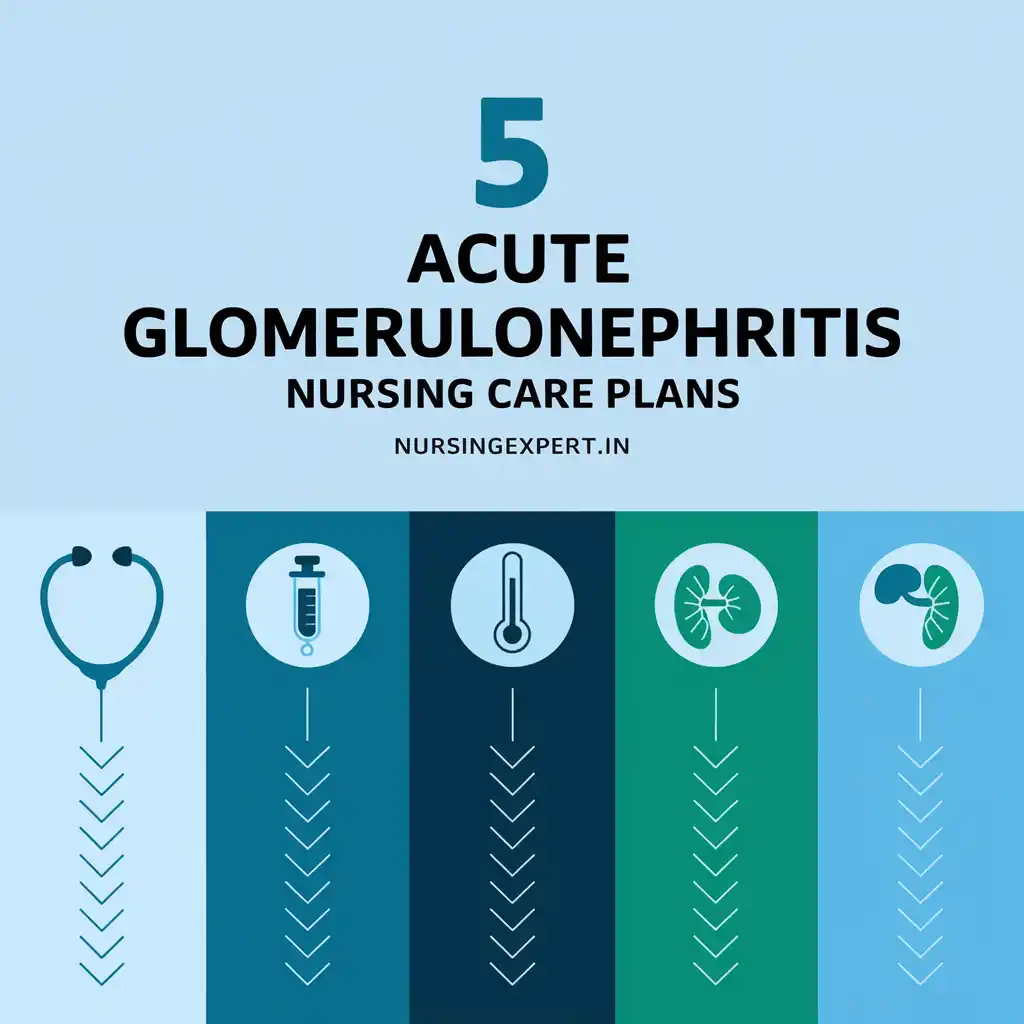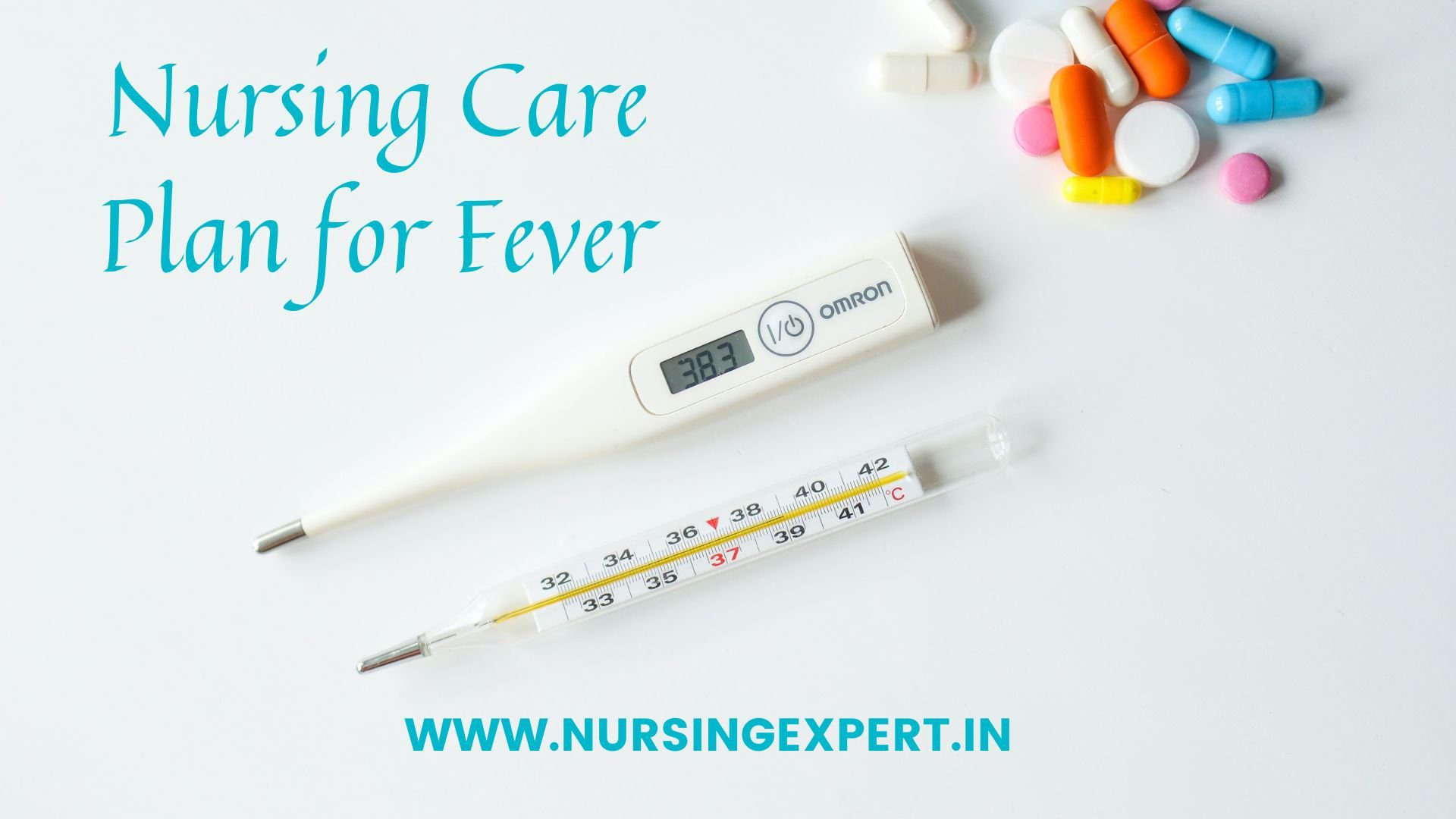Acute glomerulonephritis is an inflammation of the kidney’s glomeruli. The condition can lead to fluid retention, impaired kidney function, and electrolyte imbalances. Nurses play a key role in early detection, patient education, and ongoing management. This guide presents five detailed nursing care plans that help address the challenges of acute glomerulonephritis. A downloadable PDF version is available for quick reference and clinical use.
Thank you for reading this post, don't forget to subscribe!
1. Introduction
Acute glomerulonephritis can cause significant changes in kidney function. Nurses must assess patients thoroughly and intervene early. Effective care plans improve patient outcomes by reducing complications such as fluid overload and electrolyte disturbances. The following care plans address common nursing diagnoses for acute glomerulonephritis. They include targeted interventions and clear evaluation criteria to support clinical practice.

2. Overview of Acute Glomerulonephritis
Acute glomerulonephritis often results from an infection or immune-mediated process. Patients may present with symptoms such as:
- Edema, especially around the eyes and in the lower limbs
- Hypertension
- Dark urine
- Reduced urine output
These signs indicate that the kidneys are under stress. Early recognition is essential to reduce complications and promote recovery. Nurses monitor these symptoms closely and adjust care plans as needed.
3. Nursing Care Plan 1: Risk for Fluid Volume Excess
Assessment
- Subjective: Patient reports swelling and discomfort.
- Objective: Edema is present in the lower extremities and face; weight gain is noted; blood pressure is elevated.
Nursing Diagnosis
- Risk for Fluid Volume Excess related to impaired kidney function and sodium retention.
Goals/Expected Outcomes
- Short-Term: The patient demonstrates decreased edema and reports less discomfort within 48 hours.
- Long-Term: The patient maintains stable fluid balance as evidenced by normal weight and controlled blood pressure.
Interventions/Planning
- Monitor daily weights and intake/output records.
- Assess blood pressure and observe for signs of fluid overload.
- Educate the patient on fluid restrictions and low-sodium diets.
- Administer diuretics as ordered and monitor their effects.
Implementation
- Record weight daily at the same time.
- Encourage the patient to measure fluid intake.
- Provide educational materials on diet modifications.
- Collaborate with the physician regarding diuretic therapy.
Rationale
Early detection of fluid overload reduces the risk of pulmonary edema and cardiovascular complications.
Evaluation
- The patient shows stable weight trends.
- Edema decreases and blood pressure trends toward normal levels.
- The patient verbalizes understanding of dietary restrictions.
4. Nursing Care Plan 2: Ineffective Renal Perfusion
Assessment
- Subjective: The patient complains of fatigue and reduced energy.
- Objective: Urine output is decreased, and laboratory results show elevated blood urea nitrogen (BUN) and creatinine levels.
Nursing Diagnosis
- Ineffective Renal Perfusion related to glomerular inflammation and reduced kidney function.
Goals/Expected Outcomes
- Short-Term: The patient exhibits increased urine output and improved laboratory values within 72 hours.
- Long-Term: Renal function stabilizes and the patient maintains adequate renal perfusion.
Interventions/Planning
- Monitor vital signs, including blood pressure and heart rate.
- Measure urine output hourly or as prescribed.
- Assess laboratory values and report significant changes.
- Administer prescribed medications such as angiotensin-converting enzyme (ACE) inhibitors.
- Encourage rest to reduce renal workload.
Implementation
- Document urine output accurately.
- Perform regular blood pressure checks.
- Educate the patient about the importance of medication adherence.
- Collaborate with the healthcare team to adjust treatments based on lab results.
Rationale
Monitoring renal perfusion prevents further damage to kidney tissue and supports recovery.
Evaluation
- Urine output increases to expected levels.
- Laboratory values improve, indicating enhanced renal function.
- The patient reports less fatigue and better overall well-being.
5. Nursing Care Plan 3: Risk for Electrolyte Imbalance
Assessment
- Subjective: The patient feels weak and experiences muscle cramps.
- Objective: Laboratory tests show abnormal levels of potassium and sodium.
Nursing Diagnosis
- Risk for Electrolyte Imbalance related to impaired kidney function and medication effects.
Goals/Expected Outcomes
- Short-Term: The patient’s electrolyte levels move toward normal ranges within 48–72 hours.
- Long-Term: The patient maintains balanced electrolytes as demonstrated by stable lab values and absence of symptoms.
Interventions/Planning
- Monitor serum electrolyte levels regularly.
- Assess for signs of hyperkalemia (e.g., arrhythmias, muscle weakness) and hyponatremia (e.g., confusion, headache).
- Educate the patient about dietary sources of electrolytes.
- Collaborate with the healthcare provider to adjust electrolyte supplements or diuretics.
- Document changes in symptoms and lab results.
Implementation
- Draw blood samples as ordered and review lab results.
- Educate the patient on the importance of reporting new symptoms.
- Adjust dietary recommendations based on lab findings.
- Provide timely updates to the healthcare team regarding electrolyte trends.
Rationale
Early intervention in electrolyte imbalances prevents severe complications such as cardiac arrhythmias and neurological deficits.
Evaluation
- Laboratory values indicate correction of electrolyte imbalances.
- The patient reports reduced muscle cramps and improved energy.
- The patient demonstrates an understanding of dietary recommendations for electrolyte management.
6. Nursing Care Plan 4: Risk for Infection
Assessment
- Subjective: The patient expresses concern about fever and chills.
- Objective: The patient shows an elevated temperature, and laboratory findings may indicate a recent infection.
Nursing Diagnosis
- Risk for Infection related to immunosuppression and invasive procedures (e.g., blood draws, IV catheter use).
Goals/Expected Outcomes
- Short-Term: The patient maintains a normal temperature and shows no signs of infection during the hospital stay.
- Long-Term: The patient remains free from secondary infections during the recovery period.
Interventions/Planning
- Maintain strict aseptic techniques during all procedures.
- Monitor temperature and other signs of infection every 4–6 hours.
- Educate the patient on hand hygiene and infection prevention.
- Encourage the patient to report any signs of infection immediately.
- Collaborate with the healthcare team to manage any suspected infections promptly.
Implementation
- Follow proper infection control protocols.
- Document temperature readings and any signs of infection.
- Provide handouts on infection prevention measures.
- Ensure that all invasive procedures are performed with sterile technique.
Rationale
Preventing infection is critical in patients with compromised kidney function to avoid further complications and hospital readmissions.
Evaluation
- The patient remains afebrile and shows no clinical signs of infection.
- Laboratory markers of infection (e.g., white blood cell count) remain within normal limits.
- The patient verbalizes understanding of infection prevention practices.
7. Nursing Care Plan 5: Deficient Knowledge
Assessment
- Subjective: The patient expresses confusion about the condition and treatment.
- Objective: The patient asks questions about the disease process, medications, and lifestyle changes.
Nursing Diagnosis
- Deficient Knowledge related to acute glomerulonephritis, its management, and self-care strategies.
Goals/Expected Outcomes
- Short-Term: The patient verbalizes basic knowledge about the disease and treatment plan within 24 hours.
- Long-Term: The patient actively participates in self-care and demonstrates effective management of the condition.
Interventions/Planning
- Provide clear, simple explanations of acute glomerulonephritis.
- Use visual aids, diagrams, and written materials to explain the condition.
- Explain the purpose of medications and dietary restrictions.
- Encourage the patient to ask questions and discuss concerns.
- Schedule follow-up teaching sessions to reinforce information.
Implementation
- Conduct one-on-one education sessions.
- Provide brochures or digital resources tailored to acute glomerulonephritis.
- Use a teach-back method to confirm patient understanding.
- Collaborate with dietitians and pharmacists for comprehensive education.
Rationale
Patient education promotes self-management, adherence to treatment, and reduces anxiety about the condition.
Evaluation
- The patient accurately explains the condition and treatment plan.
- The patient follows prescribed medications and dietary recommendations.
- Follow-up sessions show sustained knowledge and improved self-care behaviors.
8. Conclusion
Acute glomerulonephritis requires careful and coordinated nursing care. These five nursing care plans address critical aspects of the condition: fluid volume management, renal perfusion, electrolyte balance, infection prevention, and patient education. Nurses who implement these care plans can enhance patient outcomes and reduce complications. The structured approach guides assessments, interventions, and ongoing evaluations. A downloadable PDF of these care plans is available for clinical practice and further study.
9. References and Further Reading
- American Association of Kidney Patients. Information on Glomerulonephritis.
- National Kidney Foundation. Acute Glomerulonephritis: Causes and Management.
- Clinical practice guidelines in nephrology journals and nursing care manuals.


